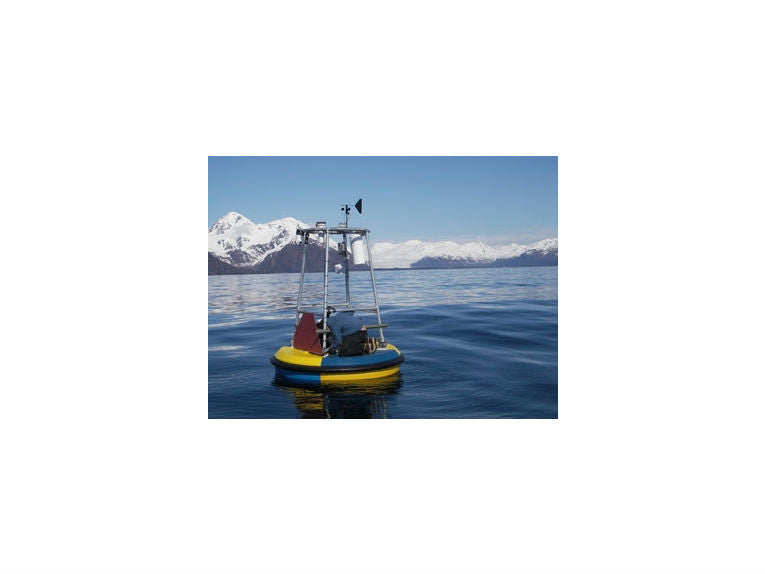Man-made CO2 emissions don't just rack up the global thermostat - they're also responsible for making the oceans more acidic too. At the turbulent interface between the heaving seas, and the blustery atmosphere, CO2 is being soaked up by the oceans - driving a chemical process that is threatening the entire marine ecosystem.
So detailed monitoring of the ongoing oceanic acidification process is vital, if we are to get a better handle on where, and how fast, the seas are being affected. The network of oceanic sensors for measuring this has now been extended to include Alaskan waters, with the first 'all-in' sensory buoys in the Pacific-Arctic region being announced yesterday.
In a collaboration between the University of Alaska Fairbanks (UAF) and the NOAA's Pacific Marine Environmental Laboratory, three buoys are initially being deployed; one, already in place, is near Seward in the mouth of Resurrection Bay; another will be in the Bering Sea; and further west the final buoy will be deployed in the Chukchi Sea. This vastly improves the scope and depth of coverage of acidification; the tethered buoys can measure acidity, water temperature, salinity and CO2 levels - both at the surface, and where they are anchored to the sea's bottom.
Extending the network of sea-based acidification sensors is important because the levels and rates of acidification vary widely across the oceans. And because of the specific combination of circulation patterns and exceptionally cold waters found off of Alaska, that area is peculiarly prone to greater levels of acidification.
These new buoys will also improve seasonal monitoring capabilities, says Jeremy Mathis from UAF - lead researcher for the project. ''We know that there is quite a bit of variability in the water throughout the year and right now all we have are snapshots from our cruises. Sometimes we find water that is acidic enough to potentially be harmful to certain organisms, but we don't know how long it persists or how extensive it is.''
Acidification is damaging to many marine organisms, because they depend on calcium carbonate to form their shelly exteriors. In more acidic waters, calcium carbonate is prone to dissolving away, threatening the survival of marine animals - from tiny coccolithophores and foraminifera to mollusks and corals. And scientists now believe that the rates of acidification that the oceans are experiencing - up by 30% since pre-industrial times - is between ten and hundred times faster than anything seen before.
If increasing acidity threatens many organisms with extinction, then the blow-back will spread across the marine food chain - and will almost certainly catch up with the fisheries that we rely on for food. Mathis hopes the buoys will help provide an early warning of such a catastrophe. ''We know that these areas are going to experience a dramatic change in pH over the coming decades and, given the importance of the fisheries, we have to stay out in front of any potential disruptions that could be caused by rising carbon dioxide levels.''
Image Credit Top: UAF.










